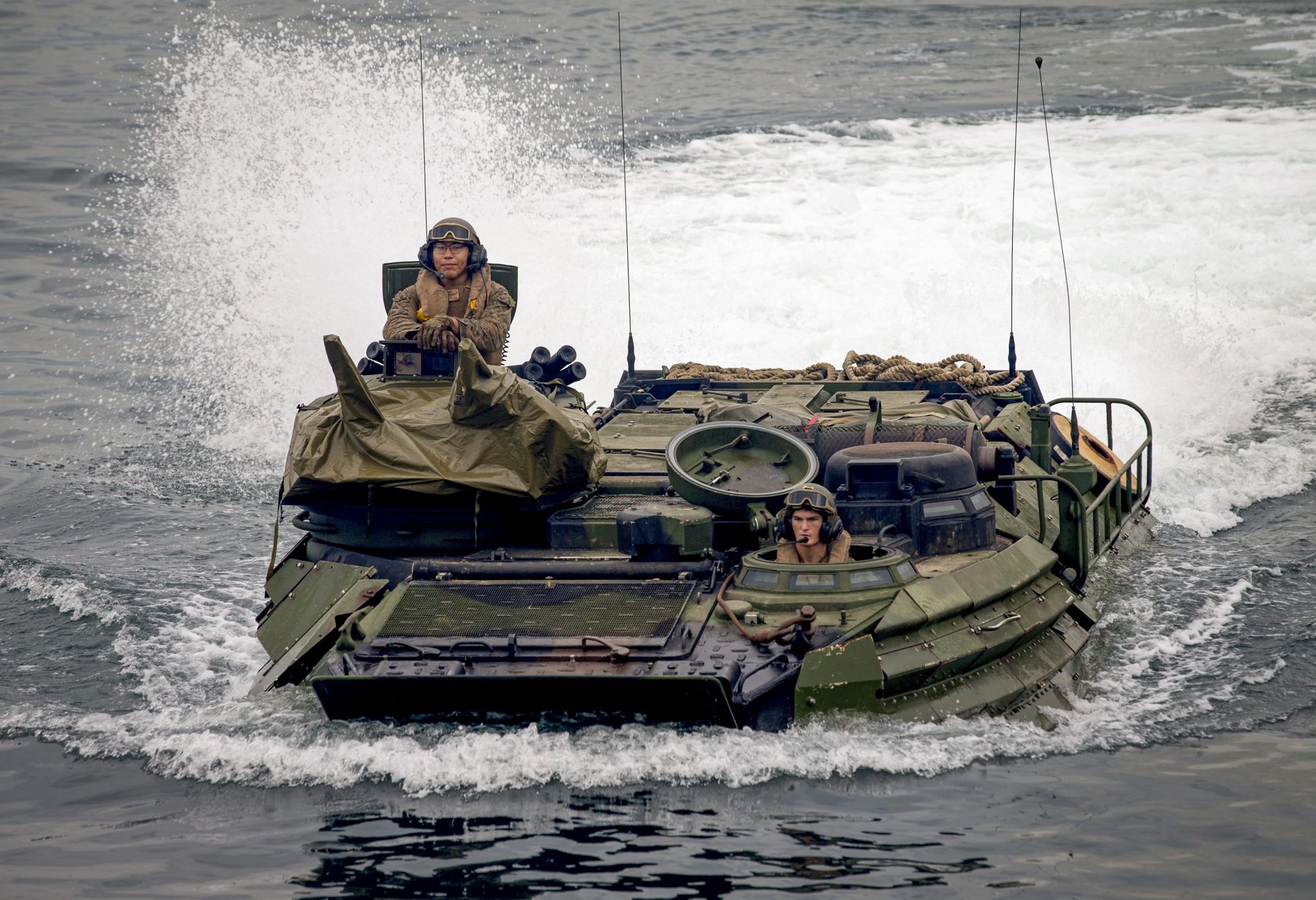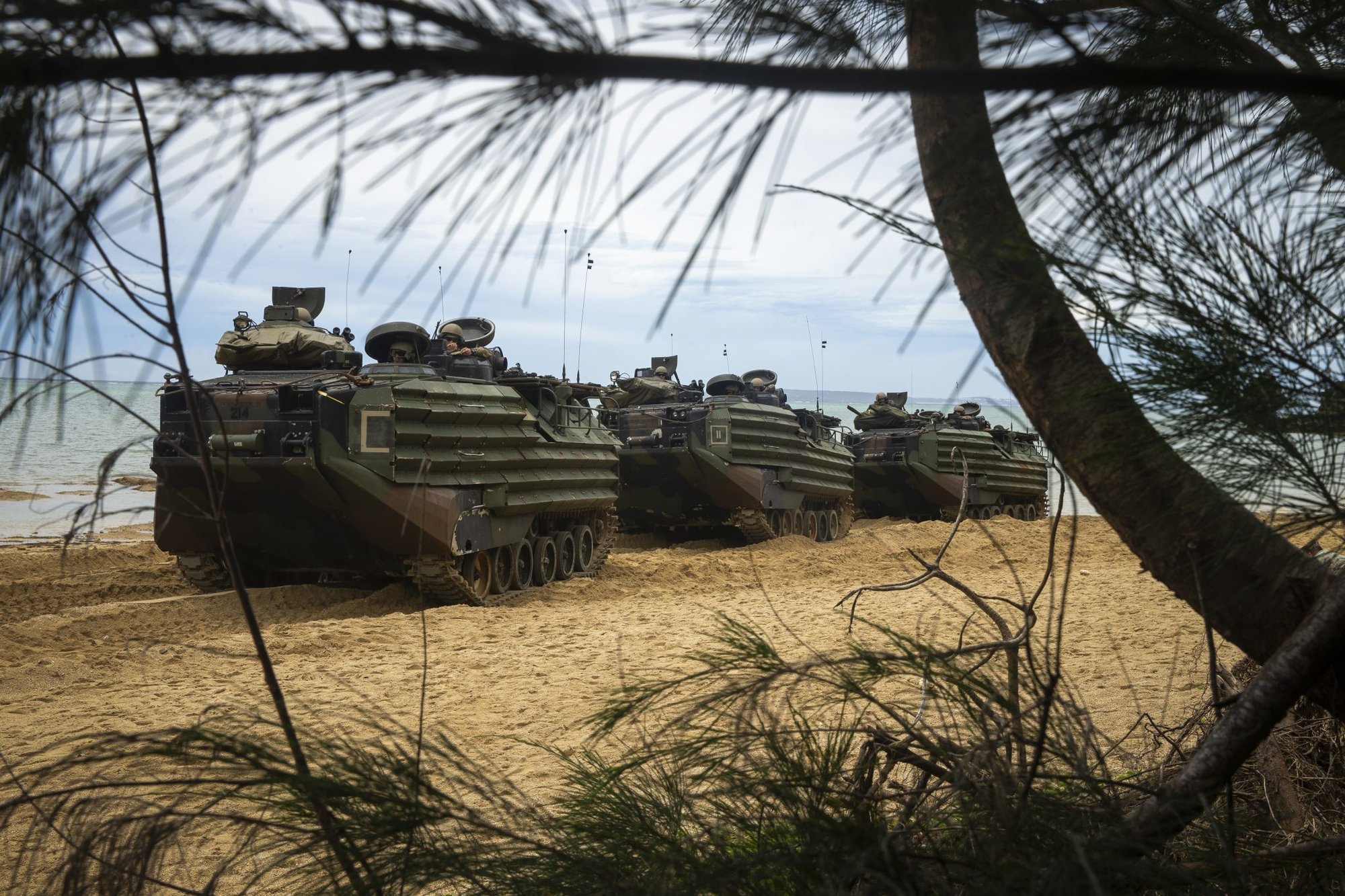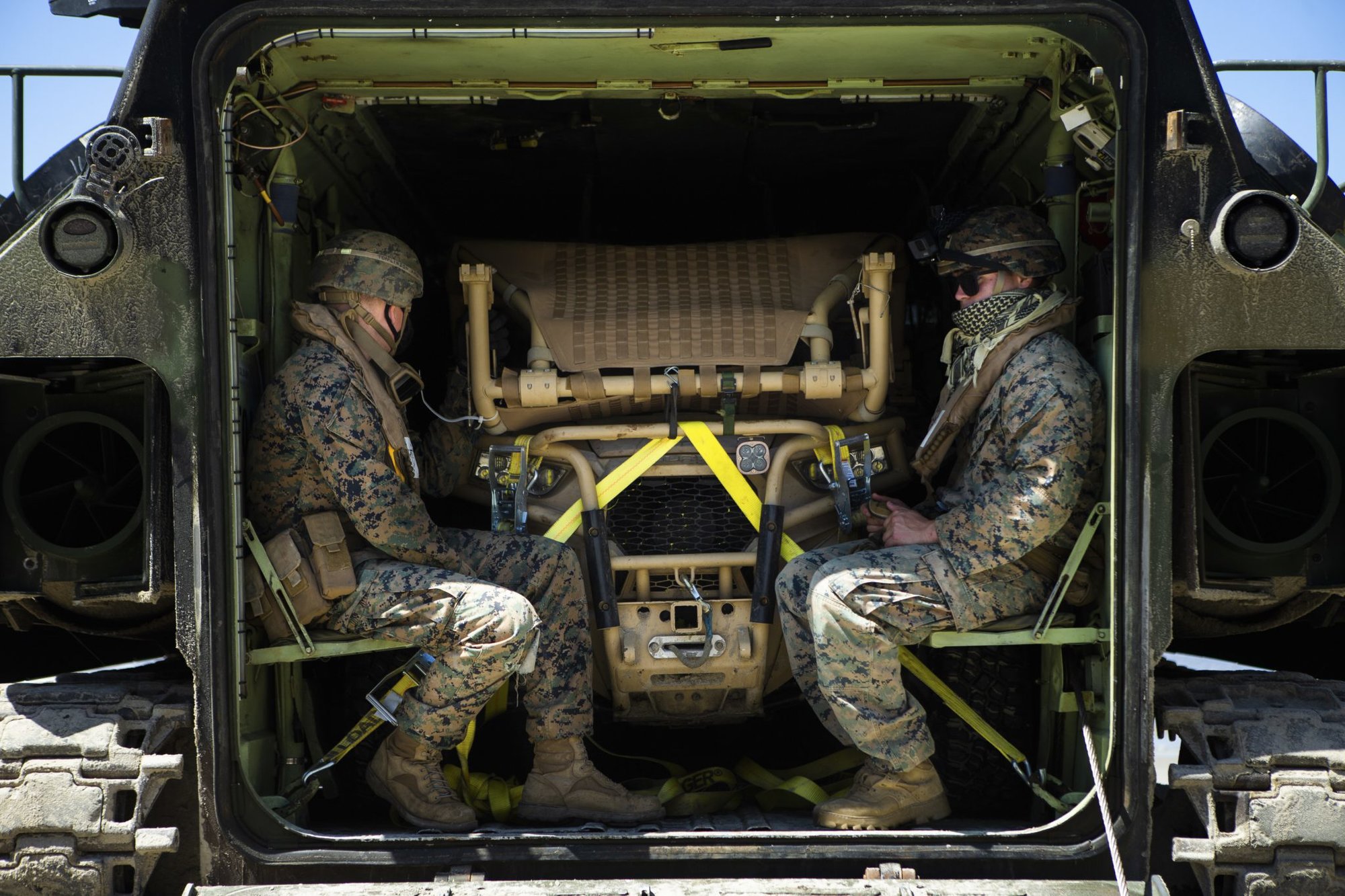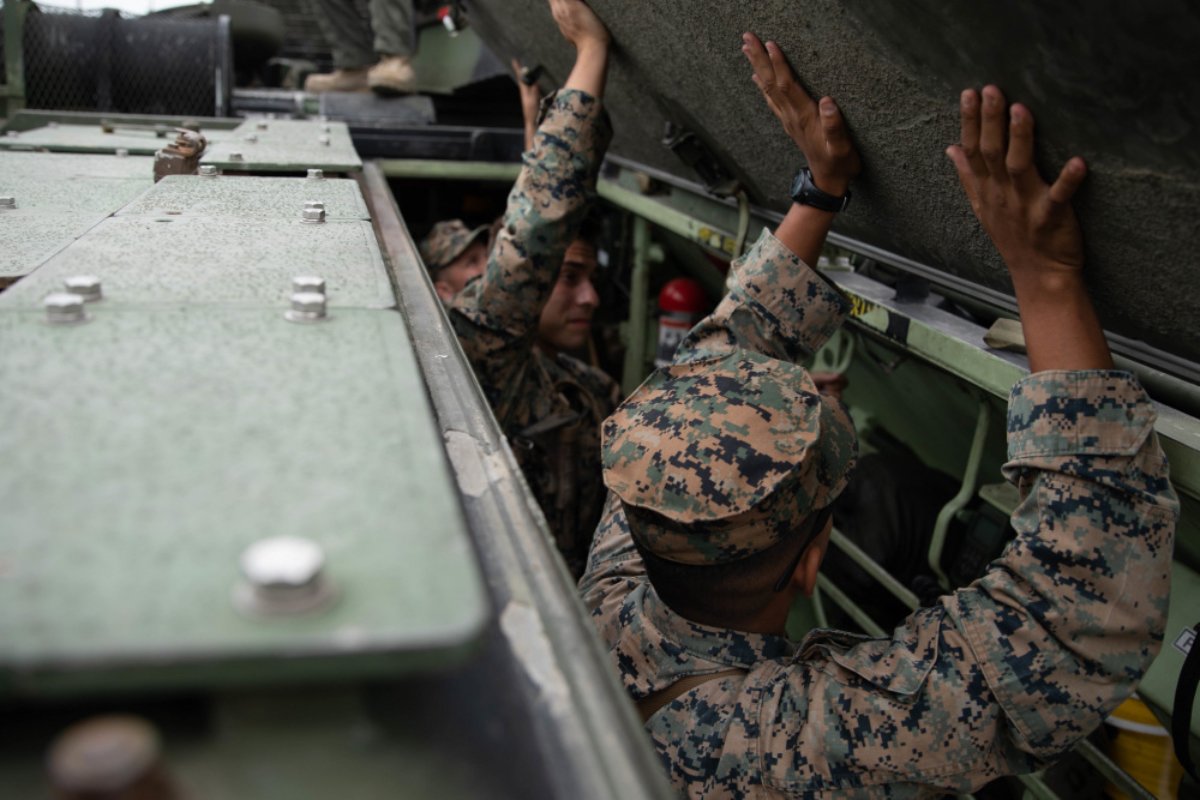‘They Had No Chance’ — Families of Service Members Killed in Marine AAV Mishap To Sue Manufacturer

US Marines in an Assault Amphibious Vehicle prepare to embark the USS Ashland Oct. 3, 2018. US Marine corps photo by Lance Cpl. Christine Phelps.
Family members of nine military service members killed in an Assault Amphibious Vehicle, or AAV, accident near Camp Pendleton in 2020 announced a lawsuit Thursday against the manufacturer BAE Systems, citing an alleged design flaw in a cargo hatch.
“BAE Systems has known about this defect for decades and they never bothered to fix it or notify the military,” lawyer Annee Della Donna said during the announcement, according to NBC 7. “Instead, they’ve taken billions of dollars from US taxpayers to build these death traps.”
Lawyers also called for the Marine Corps to stop waterborne training for all AAVs until design changes are made.
Sixteen service members attached to the 15th Marine Expeditionary Unit were moving from San Clemente Island, California, to the USS Somerset after a training exercise July 30, 2020, when their vehicle started taking on water, causing the radios and electrical system to fail. The mechanical failures prevented the craft from pumping out the seawater seeping in through damaged watertight seals. The vehicle commander climbed onto the roof and waved the “November flag” as a distress signal for nearly 20 minutes before other AAVs responded, according to the USMC accident report.

Lt. Gen. Karsten Heckl, commanding general of 1st Marine Expeditionary Force, faulted the vehicle commander for the deadly outcome, stating he should have ordered the troops to evacuate when water reached ankle level, per standard operating procedures.
When the occupants realized their AAV was about to sink, they tried to evacuate through an upper hatch, but it wouldn’t readily open. Large waves crashed into the AAV, knocking the Marines back to the interior of the hold before the vehicle sank.
“[The vessel commander] waited too long to evacuate the embarked personnel. By the time he did, the vehicle was too low in the water, had turned sideways into the waves, and when they opened the starboard side cargo hatch it exposed AAV 523519 to the direct intrusion of water,” the accident report reads.
Some Marines blasted investigators for pinning blame on one individual, arguing the deaths were due to an operational culture in which Marines know the equipment they use is both aging and dangerous yet continue to execute the mission. Active-duty Marines told Coffee or Die Magazine they’re taught from day one that the vehicle will take on water, and it’s not a big deal.

Marines also said the current SOPs are incompatible with the condition of the aging AAV fleet, which is in a constant state of disrepair. Several other AAVs operating during the July 2020 mishap had mechanical problems. According to the Marine Corps, all AAVs in use that day ran contrary to training and readiness requirements.
“I think that to pin it on a vehicle commander is just the easy way,” said Michael Manson, a former platoon commander in an Assault Amphibian Battalion. “There’s a lot more from the support structure, which didn’t perform its intended purpose.”
Seven service members escaped the sinking AAV and survived, but eight Marines and one sailor did not. The body of one Marine was recovered at the scene, but an extensive search had to be carried out until the remains of the other military members were recovered Aug. 3, 2020, with the sunken craft. The men ranged in age from 18 to 22.

While the Marine Corps investigation said embarked personnel struggled to open the cargo hatch handles due to a “lack of training” and because the compartment was extremely dark, Della Donna said the AAV hatch is difficult to open and, once it is opened, there is no way to lock it in place.
“After finding out this was 100% preventable and that they had no chance because of all the failures, that is what hurt us the most,” said Carlos Baltierra, father of fallen Marine Pfc. Bryan J. Baltierra, according to NBC 7.
At least two officers were fired in the aftermath of the accident: Col. Christopher Bronzi and Lt. Col. Michael J. Regner. Initially, the Marine Corps declined to punish Maj. Gen. Robert Castellvi, who was in command of the 1st Marine Division when the vehicle sank, even though the investigation found him partially responsible for failing to properly train and evaluate the platoon. He went on to become the Marine Corps inspector general but was removed from that position following pressure from the families of the deceased Marines and sailor.
Read Next: Marine Corps Wants 92 Amphibious Combat Vehicles To Replace Aging AAV Fleet

Hannah Ray Lambert is a former staff writer for Coffee or Die who previously covered everything from murder trials to high school trap shooting teams. She spent several months getting tear gassed during the 2020-2021 civil unrest in Portland, Oregon. When she’s not working, Hannah enjoys hiking, reading, and talking about authors and books on her podcast Between Lewis and Lovecraft.
BRCC and Bad Moon Print Press team up for an exclusive, limited-edition T-shirt design!
BRCC partners with Team Room Design for an exclusive T-shirt release!
Thirty Seconds Out has partnered with BRCC for an exclusive shirt design invoking the God of Winter.
Lucas O'Hara of Grizzly Forge has teamed up with BRCC for a badass, exclusive Shirt Club T-shirt design featuring his most popular knife and tiomahawk.
Coffee or Die sits down with one of the graphic designers behind Black Rifle Coffee's signature look and vibe.
Biden will award the Medal of Honor to a Vietnam War Army helicopter pilot who risked his life to save a reconnaissance team from almost certain death.
Ever wonder how much Jack Mandaville would f*ck sh*t up if he went back in time? The American Revolution didn't even see him coming.
A nearly 200-year-old West Point time capsule that at first appeared to yield little more than dust contains hidden treasure, the US Military Academy said.












